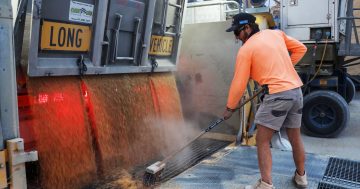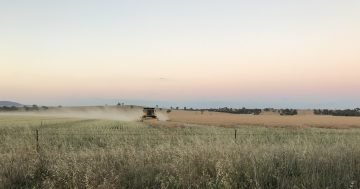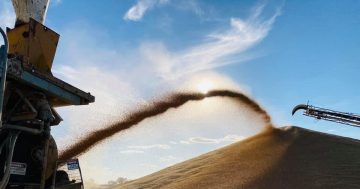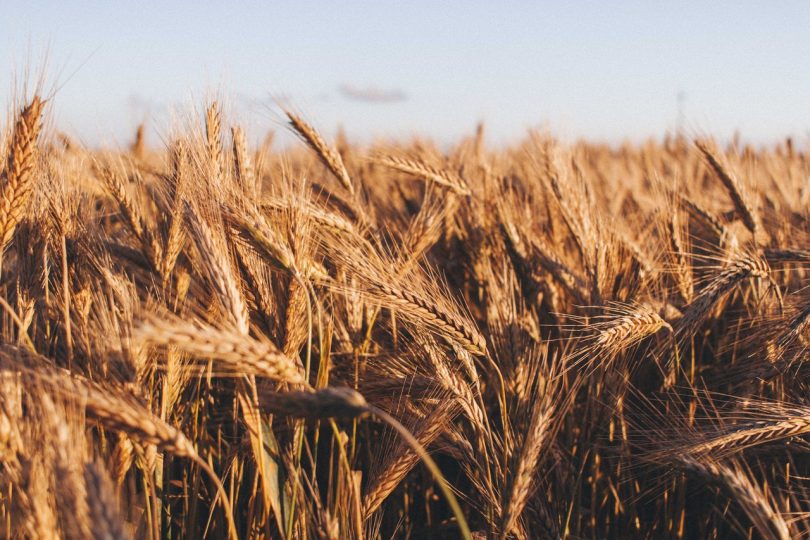
Wheat harvest has started at Caragabal, in western NSW, with canola still underway in South West Slopes. Photo: Supplied.
The men and women on the land calmed this week as activity on the sweet, sun-ripened fields of golden grain were halted by a cold front in southwest NSW.
With rainfall between 15-25mm recorded in the 24 hours from Sunday evening (22 November) it was tools down, park the trucks and pull up the tarps as harvest crews took a breather, possibly the first since harvest started in earnest in mid-November.
What a difference 12 months makes.
This time last year, the canola was done and trucks were slow dripping into silos whatever wheat remained as the big dry prevailed.
However, this year, in a complete reversal of fortune, one farmer reported he recently hauled his total 2019 canola tonnage from one paddock in just one day.
And that was the first of 19 fairly large paddocks.
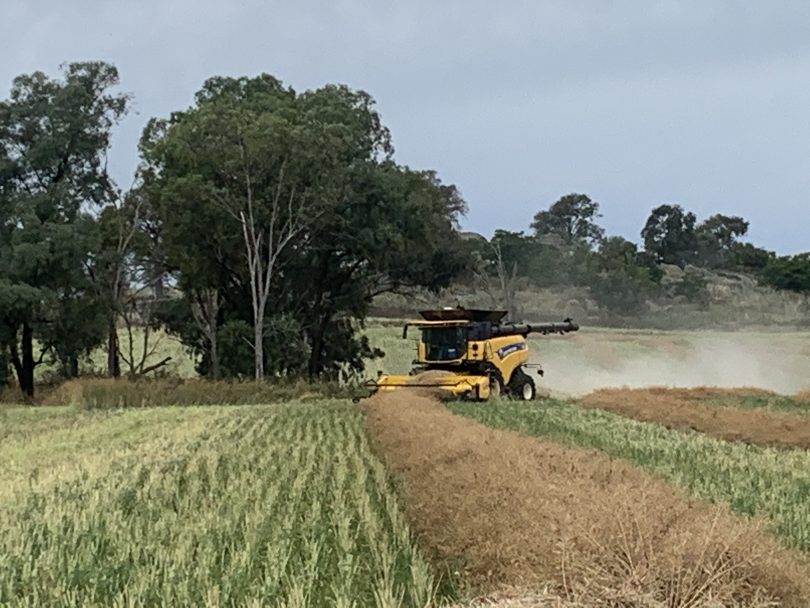
Canola harvest underway at “South.Greenbank”, near Thuddungra in the NSW South West Slopes. Property owner Jamie Watson says his wheat is also looking good, from the canola side of the fence. Photo: Paul Blake.
“It’s unbelievable, a lot of people are recording their highest average yields this year,” says agronomist Andrew Daley of Harden-based independent agribusiness advisory firm Premier Advisory.
Andrew covers an area roughly bordered by West Wyalong, Wagga Wagga, Jugiong, Goulburn, Boorowa and Cowra, and the 2019 harvest, he says, could topple records previously set in 2016 and 2010.
Crops in this region range from predominately canola, wheat, barley and oats to the lesser grown chickpeas, lupins and fava beans.
Incidentally, fava beans, like everything else, are doing well.
But the canola and wheat is going gangbusters.
“I know on some farms the canola is yielding 400-500kg better than some people have recorded previously,” says Andrew.
And rightly so, with the weather gods hitting the right rain and sunshine switches throughout the year before windrowing started.
“It’s been the perfect finish for canola,” says Andrew. “There’s not been a day above 32 degrees for many farmers and we kept getting rain to fill it during the spring.”

Jamie Watson of ‘South.Greenbank’ prepares to start harvesting canola. Photo: Danette Watson.
Thuddungra farmer Jamie Watson of ‘South.Greenbank’, midway through his canola, concurs.
“Yeah, the cool finish in late October and early November was really good for canola,” he says.
In many cases, farmers get to double dip canola and wheat, putting stock onto some crops throughout winter.
This year, says Andrew, yields – grazed and ungrazed – appear to be equal in output.
“One property at Boorowa I judged, there was no yield difference between the grazed and ungrazed crop, but I put the ungrazed crop ahead just because it is likely to be a higher grade wheat because of nitrogen and a little bit of moisture to finish it,” he says.
Fresh from a weekend of judging wheat crops around Boorowa and Wallendbeen, Andrew says he’s seeing some of the highest yields ever recorded in wheat competitions.
Wallendbeen is known for its wheat growing pedigree, evidenced by its dominance in the annual Agricultural Societies Council Dryland Field Wheat Competition.
Last year’s winners – amid the drought – were Scott and Julia McLeod from Wallendbeen, who are now three-time state winners.
But Andrew is keeping a close eye on crops near Warren and Narromine, way out west, which are throwing down the gauntlet.
Jamie says from the canola side of the fence his wheat is looking good but the jury is out on whether it’s a record crop to beat 2016.
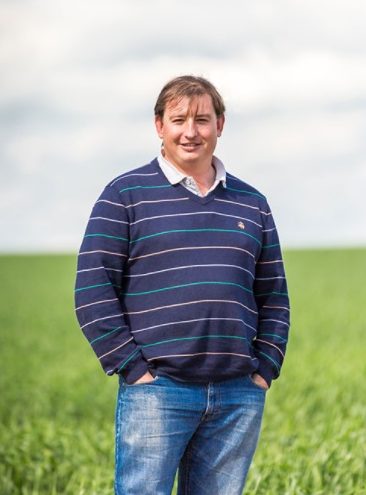
Agronomist Andrew Daley says spring conditions have been ideal for canola. Photo: Premier Advisory.
Now the trick will be getting the remaining grain off in one clean sweep leading up to the festive season, with many farmers hoping for a warm window of clear 32-34-degree days for the next 20 days.
It’s here that silo logistics come into play with many producers a scissor snip away from a tickertape parade welcome for southern bound machinery to help move the grain off paddock.
“Everyone thought headers would be a big issue, but they’ve had enough dry weather in the north of the state for headers and trucks to head south looking for work to fill any gaps,” says Andrew. “They’re already in our crops.”
The silos themselves may yet become the battleground with some of the smaller silos remaining closed and a heavier reliance on on-farm storage in the form of silos and above-ground bunkers.
Andrew says that while the canola is cruising in, the larger volume wheat grains will prove challenging for the silos that are open.
“It’s OK for Cunningar and Bribbaree silos; really any that trains can get to,” he says. “They will fill up, but space can be cleared.
“But others such as Maimuru that are without freight rail links, there is going to be a problem there.”
GrainCorp area manager Tim McColl is confident the silos will meet the harvest demand.
“Cootamundra and Cunningar we will look to rail out,” he says. “But with Maimuru and Greenethorpe, if we do fill them I don’t think there will be much left. I think we’ll get a majority of the crop.”







